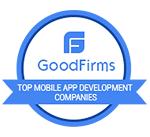Introduction
Have you ever wondered why some small businesses seem to effortlessly handle customer inquiries, automate complex tasks, and make data-driven decisions while others struggle to keep up? The secret weapon increasingly lies in custom AI agents —intelligent digital assistants that go far beyond simple chatbots to transform how businesses operate.
In today’s hyper-competitive market, small businesses face a unique paradox. They need sophisticated technology to compete with larger enterprises, yet they often lack the resources to invest in expensive, one-size-fits-all solutions. This is where custom AI agents emerge as game-changers, offering tailored intelligence that fits your specific business needs like a glove fits a hand.
Think of AI agents as your tireless digital employees who never need coffee breaks, never call in sick, and continuously learn from every interaction. Unlike traditional software that follows rigid rules, these intelligent systems adapt, evolve, and become more valuable over time. They’re not just tools; they’re partners in your business growth journey.
The transformation we’re witnessing isn’t just technological—it’s fundamentally changing how small businesses compete, serve customers, and scale operations. As we dive deeper into this comprehensive guide, you’ll discover not only what AI agents can do for your business but also how to avoid common pitfalls and implement them successfully.
Also Read- AI App Development Cost in 2025: From
The Real AI Agent Challenges Small Businesses Face
Budget Constraints and ROI Concerns
Let’s address the elephant in the room—money. Small businesses often operate on razor-thin margins, making every investment decision critical. The initial cost of developing custom AI agents can seem daunting, especially when you’re comparing it to your monthly operating expenses. However, viewing AI agents solely through the lens of upfront costs is like judging a book by its price tag rather than the knowledge it contains.
The real challenge isn’t just the financial investment but understanding the return timeline. Unlike traditional marketing campaigns that might show immediate results, AI agents often demonstrate their value progressively. They start by handling simple tasks, gradually taking on more complex responsibilities as they learn your business patterns. This gradual value realization can create anxiety for business owners expecting instant transformation.
Consider this perspective: a custom AI agent handling customer service inquiries costs roughly the same as hiring a part-time employee for six months. But while that employee works 20 hours a week, your AI agent operates 24/7, handles multiple conversations simultaneously, and never needs training refreshers. The ROI becomes clearer when you factor in scalability, consistency, and the compound effect of continuous learning.
Technical Complexity and Skill Gaps
You don’t need to be a rocket scientist to launch a successful AI agent, but the technical landscape can feel overwhelming. Small business owners often find themselves drowning in jargon—machine learning, natural language processing, neural networks—terms that sound more like science fiction than business tools.
The skill gap presents itself in multiple layers. First, there’s the challenge of understanding what AI agents can and cannot do. Many businesses either overestimate capabilities, expecting human-level reasoning, or underestimate potential, limiting agents to basic FAQ responses. Second, there’s the implementation challenge—knowing how to integrate these systems with existing workflows without disrupting operations.
Integration with Existing Systems
Your business likely runs on a patchwork of systems—a CRM here, an inventory management system there, perhaps a separate booking platform, and don’t forget that accounting software you’ve been using for years. Introducing an AI agent into this ecosystem isn’t like adding another app to your phone; it’s more like introducing a new team member who needs to learn everyone’s language.
Integration challenges manifest in unexpected ways. Your AI agent might excel at understanding customer queries but struggle to access the inventory database to check product availability. Or it might brilliantly schedule appointments but fail to sync with your team’s calendars. These disconnects create friction that can undermine the entire implementation.
Data Privacy and Security Considerations
In an era where data breaches make headlines weekly, small businesses can’t afford to be cavalier about security. AI agents, by their very nature, process vast amounts of potentially sensitive information—customer conversations, purchase histories, personal preferences. This data goldmine that makes agents intelligent also makes them attractive targets for cybercriminals.
The challenge intensifies when you consider regulatory compliance. Depending on your location and industry, you might need to navigate GDPR, CCPA, HIPAA, or other alphabet soup regulations. Each comes with its own requirements for data handling, storage, and user consent. For a small business without a dedicated legal team, ensuring compliance while maintaining AI agent effectiveness can feel like walking a tightrope.
Mistakes To Avoid in AI Agent Development
Overcomplicating the Initial Implementation
Here’s a truth bomb that might save you thousands of dollars and countless headaches: your first AI agent doesn’t need to be Iron Man’s JARVIS. Too many businesses fall into the trap of trying to build an all-knowing, all-doing super agent from day one. It’s like trying to run a marathon without first learning to walk.
The overcomplication trap manifests in various forms. Some businesses insist on natural language processing so advanced that the agent can understand sarcasm and regional dialects. Others want their agent to handle everything from customer service to predictive analytics to making coffee (okay, not literally, but you get the point). This kitchen-sink approach almost always leads to delays, budget overruns, and ultimately, a system that does many things poorly rather than a few things excellently.
Start with a focused use case—perhaps answering the top 20% of customer questions that consume 80% of your support time. Master that, measure the impact, gather feedback, then expand. Think evolution, not revolution.
Ignoring User Experience Design
You’ve probably encountered those frustrating automated phone systems that make you want to scream “REPRESENTATIVE!” until you’re blue in the face. Don’t let your AI agent become the digital equivalent. User experience isn’t just about functionality; it’s about creating interactions that feel natural, helpful, and even delightful.
Poor UX design in AI agents often stems from thinking like a programmer rather than a user. Your agent might be technically capable of processing complex queries, but if users need a manual to figure out how to ask questions, you’ve already failed. The best AI agents guide users naturally through interactions, anticipate needs, and gracefully
handle misunderstandings.
Underestimating Training and Maintenance Requirements
Deploying an AI agent isn’t a “set it and forget it” situation—it’s more like adopting a very smart puppy that needs continuous training and attention. Many businesses budget for development but forget about the ongoing investment required to keep their agent performing optimally.
Training challenges emerge from multiple angles. Your agent needs initial training data, but it also requires continuous feedback to improve. When your business introduces new products, services, or policies, your agent needs updates. When customers start asking questions in new ways or about emerging topics, your agent needs guidance. This ongoing refinement process demands both time and expertise.
Failing to Define Clear Success Metrics
How do you know if your AI agent is succeeding? If you answered “when customers stop complaining” or “when it feels like it’s working,” you’re setting yourself up for disappointment. Vague success criteria lead to vague results and make it impossible to justify continued investment or identify areas for improvement.
Success metrics for AI agents should be specific, measurable, and tied to business outcomes. Instead of “improve customer service,” aim for “reduce average response time from 2 hours to 5 minutes” or “achieve 85% first-contact resolution rate.” These concrete goals not only guide development but also provide clear evidence of ROI.
Also Read- AI Agents Explained: Why They Matter and Real-World Use Cases
Types of AI Agents
Conversational AI Agents
These are the social butterflies of the AI world, designed to engage in natural, flowing conversations with humans. Unlike traditional chatbots that follow scripted responses, conversational AI agents understand context, remember previous interactions, and can handle complex, multi-turn dialogues.
Imagine having a knowledgeable employee who never forgets a customer’s name, previous purchases, or preferences. Conversational agents can handle everything from answering product questions to providing personalized recommendations, processing returns, and even engaging in small talk that builds rapport. They’re particularly powerful in industries where relationship building drives sales, such as real estate, financial services, and luxury retail.
The sophistication of modern conversational agents extends beyond mere text exchanges. They can detect emotional cues in customer messages and adjust their tone and approach accordingly. Frustrated customer? The agent adopts a more empathetic, solution-focused approach. Excited buyer? It matches their enthusiasm while guiding them toward a purchase.
Task Automation Agents
While conversational agents are the face of your operation, task automation agents are the behind-the-scenes workhorses. These digital employees excel at repetitive, rule-based tasks that consume hours of human time—data entry, report generation, invoice processing, and appointment scheduling.
Consider the typical small business owner’s day: checking inventory levels, updating spreadsheets, sending follow-up emails, and generating reports. Task automation agents can handle these activities simultaneously, accurately, and without the Monday morning blues. They’re like having an incredibly efficient assistant who never makes typos, never forgets a task, and can process thousands of items in the time it takes you to finish your morning coffee.
Predictive Analytics Agents
These are your business fortune-tellers, minus the crystal ball and mysterious ambiguity. Predictive analytics agents analyze patterns in your historical data to forecast future trends, identify opportunities, and flag potential problems before they materialize.
For a retail business, this might mean predicting which products will trend next month, allowing you to adjust inventory accordingly. For a service business, it could involve identifying customers likely to churn, enabling proactive retention efforts. These agents transform raw data into actionable insights, turning hindsight into foresight.
Decision Support Agents
Think of these as your AI advisors, designed not to make decisions for you but to ensure you make better-informed ones. Decision support agents aggregate data from multiple sources, analyze complex scenarios, and present recommendations with clear reasoning.
These agents shine in situations requiring nuanced judgment. Should you expand into a new market? Which supplier offers the best long-term value? What pricing strategy will maximize both revenue and customer satisfaction? Decision support agents can process vastly more information than any human, considering factors you might overlook and presenting options with probability-weighted outcomes.
Also Read- RAG Use Cases 2025: Transform Mobile & Web Apps | Data-Backed Guide
Comparison of AI Agent Types
| Agent Type | Primary Function | Best Use Cases | Implementation Complexity | Typical ROI Timeline |
|---|---|---|---|---|
| Conversational AI | Customer interaction & support | Customer service, sales, and lead qualification | Medium to High | 3-6 months |
| Task Automation | Repetitive task execution | Data entry, scheduling, and report generation | Low to Medium | 1-3 months |
| Predictive Analytics | Future trend forecasting | Inventory management, demand planning, risk assessment | High | 6-12 months |
| Decision Support | Strategic recommendation | Pricing optimization, market expansion, resource allocation | Medium to High | 4-8 months |
AI Agent vs Bot: The Difference You Must Know
Understanding Core Capabilities
The distinction between AI agents and traditional bots is like comparing a smartphone to a calculator—both compute, but their capabilities exist in different universes. Traditional bots operate on predetermined scripts, following if-then logic that works well for simple, predictable interactions but crumbles when faced with complexity or ambiguity.
AI agents, conversely, leverage machine learning and natural language processing to understand intent rather than just matching keywords. When a customer types “My package hasn’t shown up yet and I’m getting worried,” a bot might respond with a generic shipping FAQ. An AI agent understands the concern, checks the order status, identifies potential delays, and provides specific, contextual assistance while acknowledging the customer’s frustration.
The capability gap becomes even more pronounced in handling variations. A bot programmed to process returns might fail when a customer says, “I want to send this back” instead of “I want to return this item.” An AI agent recognizes these as equivalent requests, understanding the intent regardless of phrasing.
Learning and Adaptation Features
Here’s where the distinction becomes truly transformative: bots are static, while AI agents evolve. Every interaction teaches an AI agent something new, gradually improving its understanding and responses. It’s the difference between a tool that remains unchanged from day one and a system that becomes more valuable over time.
This learning capability manifests in subtle but powerful ways. An AI agent notices that customers asking about “shipping times” on Fridays are often planning weekend projects and might benefit from expedited shipping offers. It learns that complaints about product complexity often precede returns and proactively offers additional support resources. These insights emerge organically from patterns in data, without explicit programming.
Complexity of Task Handling
Traditional bots excel at simple, linear tasks—think password resets or balance inquiries. But throw them a curveball like “I ordered the blue widget last month, but I think I need the red one instead, though I’m not sure if it’s compatible with my existing setup, and by the way, can I get a discount since I’m a repeat customer?”—and they’re lost.
AI agents parse this complexity naturally. They identify multiple requests (product exchange, compatibility check, discount inquiry), prioritize them logically, and address each while maintaining conversation flow. They can even handle interruptions, topic changes, and clarification requests without losing context.
What Are the Advantages of Building Custom AI Agents
Tailored to Your Specific Business Needs
Off-the-shelf AI solutions are like buying a suit off the rack—it might fit okay, but it’ll never match the perfection of a tailored ensemble. Custom AI agents are designed around your unique business processes, customer base, and growth objectives. They speak your industry’s language, understand your product nuances, and align with your brand voice.
This customization extends beyond surface-level adjustments. A custom agent for a boutique law firm understands legal terminology, confidentiality requirements, and the delicate nature of client communications. One built for an e-commerce store knows your inventory system, shipping policies, and can even reflect your brand’s personality—whether that’s professionally distant or warmly casual.
The specificity advantage compounds over time. As your custom agent learns from interactions specific to your business, it develops insights that no generic solution could provide. It might be noticed that your customers in certain regions prefer different payment methods, or that support tickets spike after you send marketing emails—insights that directly inform business strategy.
Competitive Advantage Through Unique Capabilities
In a world where everyone has access to the same tools, custom AI agents become your secret sauce. While competitors struggle with generic solutions that sort of work, your tailored agent delivers experiences that feel magical to customers. It’s not just about efficiency; it’s about creating differentiation that’s hard to replicate.
Consider a small online bookstore competing against giants. Their custom AI agent doesn’t just recommend bestsellers; it understands literary preferences with nuance, suggesting obscure titles based on reading patterns, even engaging in book discussions that build community. This isn’t something you can buy off the shelf—it’s a competitive moat built on intelligent customization.
Scalability and Long-term Cost Efficiency
The beauty of custom AI agents lies in their scalability economics. Unlike human resources, where each additional unit of capacity requires proportional investment, AI agents scale logarithmically. Handling ten customers costs essentially the same as handling ten thousand.
This scalability isn’t just about volume—it’s about capability expansion. Your custom agent designed for customer service can be extended to handle sales qualification, then order processing, then inventory management. Each extension leverages existing infrastructure and learning, making subsequent capabilities cheaper and faster to implement.
Enhanced Data Control and Security
With custom AI agents, you’re not sending your sensitive business data to third-party servers where it mingles with competitors’ information. You maintain complete control over data storage, processing, and access. This isn’t just about paranoia—it’s about protecting your competitive intelligence and customer trust.
Custom solutions allow you to implement security measures tailored to your specific risks and regulatory requirements. Need to ensure HIPAA compliance for health-related data? Built in from the ground up. Want to implement zero-knowledge architecture for maximum privacy? You have that flexibility. This control becomes increasingly valuable as data privacy regulations tighten globally.
Custom AI Agents vs. Generic Solutions
| Evaluation Criteria | Custom AI Agents | Generic AI Solutions | Winner |
|---|---|---|---|
| Initial Cost | Higher ($15,000-$100,000+) | Lower ($100-$5,000/month) | Generic |
| Long-term ROI | Superior (200-500% typical) | Moderate (50-150% typical) | Custom |
| Scalability | Unlimited with minimal cost | Limited by tier/pricing | Custom |
| Customization | Complete flexibility | Limited to configuration options | Custom |
| Time to Deploy | 2-6 months | Days to weeks | Generic |
| Learning Curve | Minimal (designed for your team | Moderate to high | Custom |
| Data Security | Full control | Shared infrastructure | Custom |
| Competitive Advantage | Significant | Minimal | Custom |
A Practical Framework for Implementing AI Agents in Your Business
Phase 1: Assessment and Planning
Before you write a single line of code or spend a single dollar, you need a clear map of where you’re going. This phase isn’t about technology—it’s about understanding your business needs, capabilities, and constraints. Think of it as architectural planning before construction begins.
Start by identifying your pain points with surgical precision. Where does your team spend the most time on repetitive tasks? Which customer complaints appear most frequently? What decisions do you wish you could make with better information? These questions reveal where AI agents can deliver maximum impact.
Next, audit your technical readiness. What systems do you currently use? How is your data organized? What integration points exist? You’re not looking for perfection here—you’re identifying what needs to be prepared or improved. It’s like checking your foundation before building an addition to your house.
Finally, establish clear success criteria and ROI expectations. If you’re investing $50,000 in a custom AI agent, what return justifies that investment? Reduced customer service costs? Increased sales conversion? Faster order processing? Quantify these expectations using your current baseline metrics.
Phase 2: Development and Testing
This is where your AI agent takes its first breaths of digital life. Development should follow an iterative approach—build a little, test a little, learn a lot. Starting with a minimum viable agent (MVA) allows you to validate concepts quickly without overcommitting resources.
Your MVA might handle just the five most common customer questions or automate a single workflow. This focused approach provides rapid feedback on what works, what doesn’t, and what users actually need versus what you thought they needed. It’s like launching a food truck before opening a restaurant—you test your recipes with lower risk.
Testing extends beyond functional verification. You need to evaluate how your agent handles edge cases, inappropriate requests, and system failures. What happens when a customer asks something completely unexpected? How does the agent respond to frustrated or confused users? These scenarios reveal the difference between an agent that works in theory and one that thrives in reality.
Phase 3: Deployment and Optimization
Launching your AI agent isn’t a big-bang event—it’s more like introducing a new team member gradually. Start with a soft launch to a small user segment or for limited use cases. This controlled deployment allows you to identify and fix issues before they affect your entire customer base.
Monitor everything during early deployment. Response accuracy, user satisfaction, completion rates, escalation frequency—these metrics tell you whether your agent is helping or hindering. Be prepared to make rapid adjustments based on real-world performance.
Optimization is an ongoing journey, not a destination. Your agent should continuously improve through feedback loops. User corrections teach it better responses. New scenarios expand its capabilities.
Performance analytics reveal optimization opportunities. Think of it as ongoing education rather than one-time training.
Phase 4: Scaling and Evolution
Once your agent proves its worth in initial use cases, scaling becomes your focus. This isn’t just about handling more volume—it’s about expanding capabilities strategically. Each new capability should build on existing strengths while opening new value streams.
Scaling might mean extending your customer service agent to handle sales inquiries or expanding your task automation agent to cover additional workflows. The key is maintaining quality while growing scope. It’s like expanding a successful restaurant—you want to serve more customers without compromising the experience that made you successful.
Evolution involves fundamentally advancing your agent’s capabilities. This might mean implementing more sophisticated natural language processing, adding predictive capabilities, or enabling multi-modal interactions (voice, text, visual). Evolution should align with your business growth and changing market demands.
The Future is Orchestrated: From Single Agents to an AI Workforce
Multi-Agent Systems and Collaboration
The future isn’t about having one super-intelligent AI agent—it’s about orchestrating specialized agents that work together seamlessly. Imagine a digital workforce where your customer service agent collaborates with your inventory agent, your analytics agent, and your scheduling agent to solve complex problems holistically.
This collaborative approach mirrors how human teams function. When a customer inquires about a delayed order, your customer service agent doesn’t need to know everything. It consults the logistics agent for shipping status, the inventory agent for stock levels, and the prediction agent for estimated resolution times. Each agent excels in its domain while contributing to a unified solution.
Multi-agent systems also provide resilience. If one agent encounters an issue, others can compensate or provide alternative solutions. It’s like having a well-trained team where everyone knows their role but can support colleagues when needed.
The Rise of Agent Orchestration Platforms
As businesses deploy multiple AI agents, managing them individually becomes impractical. Enter orchestration platforms—the conductors of your AI symphony. These platforms coordinate agent interactions, manage workflows, and ensure consistent performance across your entire AI ecosystem.
According to recent industry reports, the agent orchestration market is expected to grow from $2.1 billion in 2024 to $15.8 billion by 2028, representing a compound annual growth rate of 65.3%. This explosive growth reflects the increasing sophistication of AI deployments and the need for unified management solutions.
Orchestration platforms handle the complex choreography of agent interactions. They manage authentication, data flow, error handling, and performance optimization across agents. For small businesses, this means being able to deploy sophisticated AI capabilities without becoming systems integration experts.
Preparing for the Autonomous Business Model
We’re approaching a paradigm shift where businesses can operate with minimal human intervention for routine operations. This isn’t about replacing humans—it’s about freeing them to focus on creativity, strategy, and relationship building while AI handles the repetitive and predictable.
Small businesses that prepare for this shift today will have significant advantages tomorrow. This means building flexible technical infrastructure, developing AI governance frameworks, and cultivating a culture that embraces human-AI collaboration. It’s like preparing for the internet revolution in the early 1990s—those who moved early gained insurmountable advantages.
The autonomous business model doesn’t mean zero human involvement. Instead, it represents a new division of labor where AI agents handle information processing, routine decisions, and repetitive tasks while humans provide creativity, empathy, and strategic thinking. This symbiosis amplifies human capabilities rather than replacing them.
You’ve Seen The Future. Now, Let’s Build It Together.
This guide didn’t just explain AI agents; it painted a picture of the modern, efficient, and competitive business you are capable of building. An enterprise that doesn’t just keep up but sets the pace.
The journey from your current operations to an AI-augmented future begins with a single, strategic partnership.
Partner with IPH to Craft Your Intelligent Digital Workforce
When you choose IPH Technologies, you’re not hiring a developer; you’re gaining a partner with a decade of experience, a portfolio of 500+ successful projects, and a commitment to your success that is reflected in our 5-star reviews.
Let’s architect a solution that doesn’t just solve a single problem, but transforms how you operate.
Begin Your Transformation. Tell Us About Your Vision.
Click Here to Schedule a Strategy Call with Our AI Experts
Download Our Case Study Portfolio to See Real-World Results
Your competition is already researching this. You can be the one who implements it.
Conclusion
The journey from traditional business operations to AI-enhanced processes isn’t just a technological upgrade—it’s a fundamental reimagining of how small businesses can compete, serve customers, and scale efficiently. Custom AI agents represent more than tools; they’re partners in your business evolution, learning and growing alongside your company.
We’ve explored the real challenges small businesses face, from budget constraints to technical complexity, and provided practical solutions for each. We’ve distinguished between simple bots and sophisticated AI agents, highlighting why the investment in true AI capabilities pays dividends over time. Most importantly, we’ve laid out a practical framework for implementation that any small business can follow.
The advantages of custom AI agents—from tailored functionality to competitive differentiation—far outweigh the initial investment hurdles. As we look toward a future of orchestrated AI workforces and autonomous business models, the question isn’t whether to implement AI agents, but how quickly you can begin the journey.
Remember, every giant tech company started with a single step toward innovation. Your custom AI agent journey begins with understanding your unique needs, avoiding common pitfalls, and building systematically toward a more intelligent, efficient, and competitive business. The tools are available, the frameworks are proven, and the potential is limitless.
The businesses that thrive in the next decade won’t necessarily be the largest or most well-funded—they’ll be the ones that most effectively blend human creativity with AI capability. By starting your AI agent journey today, you’re not just preparing for the future; you’re actively creating it.













.png)


